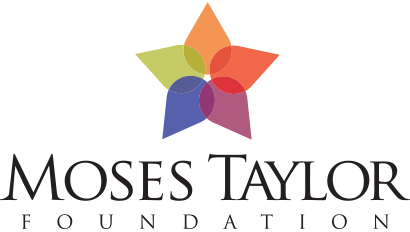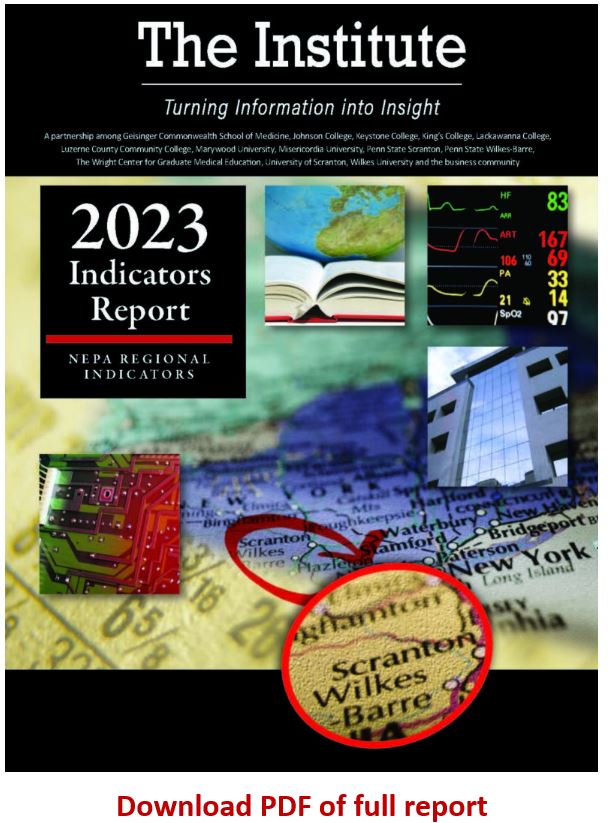Thank You
Thank you to the following organizations for their continued support of our research and this Data Dashboard, which is part of Project STIR (Sparking Transformation using Information & Research).
Nonprofits
The total number of not-for-profit organizations declined slightly in all three counties between 2018 and 2022. The total number of organizations in the three counties stood at 2,344 in 2022 compared with 2,459 in 2018. Statewide, there has been a growth in the number of nonprofits, with tax exempt organizations reaching over 75,800 in 2022 – more than there were prior to the pandemic.
Charitable organizations with 501c3 designations comprise the largest share of tax exempt organizations in the region, at 63 percent regionally and 76 percent statewide. Several other designations, including 501c4 civic leagues and social welfare organizations and 501c5 labor organizations, make up a larger share of exempt organizations in the region than they do across the state.
Non-Profit Organizations by Activity Type
The following tables show nonprofits categorized by major activity types. In each county and statewide, the largest share of nonprofits is classified as human services, followed by public and social benefit. Although the number of organizations in these two categories declined from 2018 in Lackawanna and Luzerne County and was unchanged in Wayne County, they still account for nearly half the nonprofit organizations in the three counties.
In Lackawanna and Wayne Counties, education organizations represent the third largest category of nonprofit; in Luzerne County and statewide, religious organizations represent the third largest category. Arts, culture, and humanities organizations also made up a large share, with 236 entities in the region. Exempt organizations in the health care field number168 in the three counties.
Total Non-Profit Organizations
Source: National Center for Charitable Statistics IRS Master File
Exempt Organizations by Category: 2022
Source: National Center for Charitable Statistics IRS Master File
| Lackawanna | Luzerne | Wayne | Pennsylvania | |
|---|---|---|---|---|
| 501(c)3 - Charities; Educational, Religious, Scientific, or Literary organizations | 602 | 720 | 145 | 57,573 |
| 501(c)4 - Civic Leagues, Social Welfare Organizations, etc. | 67 | 123 | 22 | 3,693 |
| 501(c)5 - Labor Organizations | 53 | 76 | 10 | 2,343 |
| 501(c)6 - Business Leagues, Chambers of Commerce, etc. | 21 | 44 | 9 | 2,142 |
| 501(c)7 - Social & Recreational Clubs | 33 | 59 | 12 | 2,864 |
| 501(c)19 - Organizations of War Veterans | 28 | 36 | 9 | 1,272 |
| All Other Exempt Organizations | 120 | 125 | 30 | 5,939 |
Lackawanna County Non-Profits by Activity
Source: National Center for Charitable Statistics IRS Master File
Luzerne County Non-Profits by Activity
Source: National Center for Charitable Statistics IRS Master File
Wayne County Non-Profits by Activity
Source: National Center for Charitable Statistics IRS Master File
Pennsylvania Non-Profits by Activity
Source: National Center for Charitable Statistics IRS Master File
Library Registration and Circulation
The COVID-19 pandemic significantly affected Pennsylvania’s public libraries. While the total number of state-funded libraries remains level at 27 in the three-county region, the statewide number dropped from 470 in 2019 to 457 in 2021. Statewide, library registration fell by over 546,000 individuals during that time. In Northeastern Pennsylvania, however, there appeared to be an increase in utilization of public libraries during the pandemic; Lackawanna and Wayne Counties saw increases in 2020, while Luzerne County remained essentially unchanged. In 2021, Lackawanna and Luzerne Counties both saw growth while Wayne County decreased by a notable amount.
The region’s libraries circulated over 1.3 million items in 2021, rebounding after significant declines in 2020. The decline in statewide and regional circulation in 2020 is likely due to reduced availability or demand for physical materials due to the pandemic. Statewide, a similar trend was seen, but the Commonwealth as a whole saw a relatively small rebound in 2021 relative to the three-county region. The increase in registration but decline in circulation seen during 2020 may be a result of an increase in need for library services other than physical materials, such as computer and internet access, electronic information resources, and virtual programming.
Library Circulation
Source: Pennsylvania State Library
Number of Libraries
Data includes state-aided libraries. Source: Pennsylvania State Library
Voter Registration and Participation
The number of registered voters on both the state and regional levels has followed a predictable and stable trend since 2000, rising significantly during presidential election years, and rising by smaller amounts during midterm federal election years. Registration often decreases following presidential elections.
The COVID-19 pandemic created logistical challenges to voter registration and in-person voting. Despite these challenges, the 2020 election resulted in record voter registration and participation both regionally and statewide. Between 2019 and 2020, voter registration increased six percent in Lackawanna and Luzerne Counties, nine percent in Wayne County, and seven percent statewide. Then between 2020 and 2021, voter registration decreased by three percent in Lackawanna and Wayne Counties, eight percent in Luzerne County, and four percent statewide. For 2022’s midterm election, in which several statewide races were on the ballot, registration increased by one percent in Lackawanna and Luzerne Counties and two percent in Wayne County and statewide.
Voter turnout for the 2020 election reached historic levels, with at least seven in ten registered voters participating regionally and statewide. Percentages of voter turnout dropped, following typical patterns, prior the 2021 municipal election. In 2022, voter turnout rebounded to 61 percent in Lackawanna County, 57 percent in Luzerne County, and 65 percent in Wayne County, levels similar to or higher than previous midterm election years in all three counties.
Registered Voters
Source: Pennsylvania Department of State
| Lackawanna | Luzerne | Wayne | Pennsylvania | |
|---|---|---|---|---|
| 2001 | 147,197 | 197,813 | 27,478 | 7,773,541 |
| 2002 | 146,129 | 198,062 | 28,023 | 7,835,775 |
| 2003 | 147,144 | 203,276 | 27,762 | 7,688,295 |
| 2004 | 154,464 | 213,296 | 30,064 | 8,366,663 |
| 2005 | 148,551 | 211,845 | 29,686 | 8,073,337 |
| 2006 | 148,283 | 196,775 | 30,394 | 8,182,876 |
| 2007 | 148,975 | 173,344 | 30,191 | 8,112,998 |
| 2008 | 157,326 | 187,844 | 32,068 | 8,755,588 |
| 2009 | 149,632 | 191,108 | 31,729 | 8,473,823 |
| 2010 | 150,577 | 188,091 | 32,159 | 8,478,509 |
| 2011 | 146,723 | 188,591 | 31,827 | 8,168,254 |
| 2012 | 149,474 | 194,137 | 32,577 | 8,508,015 |
| 2013 | 146,614 | 194,991 | 31,877 | 8,223,473 |
| 2014 | 146,655 | 196,129 | 32,090 | 8,251,050 |
| 2015 | 139,796 | 190,659 | 31,337 | 8,073,175 |
| 2016 | 148,104 | 205,332 | 33,683 | 8,722,977 |
| 2017 | 141,516 | 204,757 | 32,608 | 8,430,988 |
| 2018 | 143,610 | 207,513 | 33,339 | 8,609,880 |
| 2019 | 140,320 | 208,965 | 32,668 | 8,530,983 |
| 2020 | 149,389 | 220,888 | 35,705 | 9,090,962 |
| 2021 | 144,467 | 202,388 | 34,818 | 8,727,731 |
| 2022 | 146,125 | 204,548 | 35,514 | 8,873,144 |
Voter Participation
Source: Pennsylvania Department of State
Veterans
The estimated number of veterans in Pennsylvania decreased in 2021 to just under seven percent of the population. Lackawanna County followed a similar trend, with the number of veterans decreasing from 9.2 percent to 6.9 percent of the population from one five-year period to the next. In Luzerne County, there was a similar decrease from 9.4 to 7.8 percent, while Wayne County saw a slight increase from 10.5 to 10.7 percent, though this share remains lower than the 13 percent estimated from 2007 to 2011. Most recently, there were more than 36,500 veterans in the three-county region, and Luzerne and Wayne Counties had shares significantly higher than the share of the Commonwealth as a whole.
Veterans: Percent of Civilian Population 18+
Source: U.S. Census Bureau ACS 1-year estimates








 Sarah, a former Institute intern, joined The Institute in April 2021 as a Research Assistant. She started her new role as a Research Analyst in January 2024.
Sarah, a former Institute intern, joined The Institute in April 2021 as a Research Assistant. She started her new role as a Research Analyst in January 2024. 

 Jill Avery-Stoss joined The Institute in June 2018 to fill the newly-created role of Research, Data, Intern & Administrative Coordinator. She assists with the collection and management of data for purposes of ethical and efficient analysis. She visits partner campuses to market The Institute’s internship opportunities, and participates in event-planning logistical activities as well. In 2021, Jill was promoted to Director of Operations to reflect the diversity in her job description and the additional marketing and communication functions she successfully mastered in 2020. In 2022, Jill was named Chief Operating Officer after expanding into both research and administrative management functions. Jill is taking on project management, fundraising, and other executive leadership functions of the organization.
Jill Avery-Stoss joined The Institute in June 2018 to fill the newly-created role of Research, Data, Intern & Administrative Coordinator. She assists with the collection and management of data for purposes of ethical and efficient analysis. She visits partner campuses to market The Institute’s internship opportunities, and participates in event-planning logistical activities as well. In 2021, Jill was promoted to Director of Operations to reflect the diversity in her job description and the additional marketing and communication functions she successfully mastered in 2020. In 2022, Jill was named Chief Operating Officer after expanding into both research and administrative management functions. Jill is taking on project management, fundraising, and other executive leadership functions of the organization. Ooms is responsible for all facets of research, organizational strategy, and management. Ooms is an active principal investigator in all Institute research. Ooms has been nationally recognized as a leader in regional economic development. She turned that skill into a research institute to help other regions develop and prosper. Her strategic skills have allowed The Institute to expand its services to the private and non-profit sectors for research and analysis in community health needs assessments, strategic planning, market and feasibility studies, and economic impact analysis.
Ooms is responsible for all facets of research, organizational strategy, and management. Ooms is an active principal investigator in all Institute research. Ooms has been nationally recognized as a leader in regional economic development. She turned that skill into a research institute to help other regions develop and prosper. Her strategic skills have allowed The Institute to expand its services to the private and non-profit sectors for research and analysis in community health needs assessments, strategic planning, market and feasibility studies, and economic impact analysis.